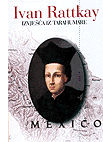|
|
|

 In fact, that was the ultimate objective of the aggression and war.
In fact, that was the ultimate objective of the aggression and war.  18 HR-10000 Zagreb Croatia Fax: +385 1 4684701 E-mail:
18 HR-10000 Zagreb Croatia Fax: +385 1 4684701 E-mail: | RUŽIČKA (7) | BROZOVIĆ(8) | |
| I. | Thesis 2: Slovak is the national language of the Slovaks and functions as a state language. | Thesis 1: The Croatian language is the language used by the Croatian nation as its main means of expression. |
| II. | Thesis 3: Slovak is a differentiated national language and its varieties constitute a dialectal unity. Thesis 4: Literary Slovak is the basis and most important variety of the Slovak language. | Thesis 6: The Neo-Štokavian Ijekavian dialectal basis of the Croatian standard language contains only the Western NeoŠtokavian features of the Ijekavian and Ikavian subdialects. Thesis 8: The dialectal basis of the Croatian standard language is NeoŠtokavian because the majority of Croats speak Štokavian and not because, in addition to the Croats, there are others who use the same dialect. |
| III. | Thesis 6: The main characteristic of the development of contemporary literary Slovak is the development in conformity with its own natural laws. Thesis 12: Close rapport with literary Slovak is an expression of the Slovaks' patriotic national pride; it is an expression of their membership in a national culture. | Thesis 3: The Croatian standard language is the result of an uninterrupted development from the earliest Glagolitic written monuments until today. Thesis 5: The Croatian standard language developed its culturo-linguistic structure independently and in its own way. |
| IV. | Thesis 7: Structural congruity, stability, and functionality of the linguistic means are the essential criteria for determining the literary status of the linguistic means. Thesis 9: Codification of literary Slovak is a scholarly description of the linguistic means and norms that have been sanctioned by a representative national institution. Thesis 11: Language education is a socially necessary and progressive activity and consequently merits increased attention. Thesis 1: Slovak is a genetically and typologically distinct Slavic language. | Thesis 2: Among all the manifestations of the Croatian language the most important one is the Croatian standard language, with its specific dialectal basis, which is characterized by its history and superstructure. Thesis 9: The rights of the Croatian standard language are determined by the functions it performs for the Croatian nation, and not by the degree of similarity or dissimilarity it may have with other languages. |
| V. | Thesis 5: The contemporary stage of development of the Slovak literary language comprises the period between the 1940s and the present. | |
| VI. | Thesis 8: The following are the sources for the study of contemporary literary Slovak: selected usage, good linguistic consciousness, and the results of contemporary research. Thesis 10: The quality of linguistic practice depends on the cultural level of the users of the literary language: it is measured by linguistic correctness, stylistic adequacy and social appropriateness of the means used. | Thesis 10: Laws and regulations for the Croatian standard language have their source in that very language and in its service to the Croatian nation and society. |
| VII. | Thesis 4: The Croatian standard language, formed in the middle of the 18th century, is also in our time open to the Kajkavian and Čakavian dialects. | |
| VIII. | Thesis 7: Slavic comparative and dialectological criteria are valid only for the science of Slavic studies. |
 wealthy bourgeois Dubrovnik and the poor herdsmen in the hinterland. It was a borderland in the fullest sense of the word: a boundary between civilizations, cultures, religions, nations, states.
wealthy bourgeois Dubrovnik and the poor herdsmen in the hinterland. It was a borderland in the fullest sense of the word: a boundary between civilizations, cultures, religions, nations, states.  pattern of the social survival strategy, which is recognizable on both the micro- and macrolevels.
pattern of the social survival strategy, which is recognizable on both the micro- and macrolevels.  and the collapse of socialist Yugoslavia, ZIRAL's headquarters were transferred from Chicago to Mostar. On the occasion of ZIRAL'S 30th anniversary, we bring here the list of books it has published during the last three decades and wish its new leadership much success in the future. Send your orders to: ZIRAL, Hrvatske mladezi bb, 88000 Mostar, Bosnia and Herzegovina; Tel. 387-88-328-411; Fax 387-88-320-239.
and the collapse of socialist Yugoslavia, ZIRAL's headquarters were transferred from Chicago to Mostar. On the occasion of ZIRAL'S 30th anniversary, we bring here the list of books it has published during the last three decades and wish its new leadership much success in the future. Send your orders to: ZIRAL, Hrvatske mladezi bb, 88000 Mostar, Bosnia and Herzegovina; Tel. 387-88-328-411; Fax 387-88-320-239.  Fast Forward into Europe. Zagreb. Europe House Zagreb, 1999. 72 pages.
Fast Forward into Europe. Zagreb. Europe House Zagreb, 1999. 72 pages.  and Antologija hrvatskog humoristickog pjesnistva (The Anthology of Croatian Humorous Poetry). His work was translated into foreign languages. He won numerous prizes for his literary and artistic work. Balog published more than forty books. Based on his book "Nice Manners or How I Can Avoid to Be a Twit", a theater performance was staged, while a series of cartoons by the well known "Zagrebacka skola crtanog filma" (The Zagreb School of Animated Film), as well as a TV series are presently being made.
and Antologija hrvatskog humoristickog pjesnistva (The Anthology of Croatian Humorous Poetry). His work was translated into foreign languages. He won numerous prizes for his literary and artistic work. Balog published more than forty books. Based on his book "Nice Manners or How I Can Avoid to Be a Twit", a theater performance was staged, while a series of cartoons by the well known "Zagrebacka skola crtanog filma" (The Zagreb School of Animated Film), as well as a TV series are presently being made.  II. (zapisi, osvrti, razgovori). Mostar: Matica hrvatska, 2000. 144 pages.
II. (zapisi, osvrti, razgovori). Mostar: Matica hrvatska, 2000. 144 pages. 

 able to establish the basis of a national movement? What were the concepts that Stjepan Radic and his brother Antun articulated to win peasants over to the national cause? What role did the Yugoslav state, which denied the national identity of the Croats, play in strengthening Croat national integration? What was and remains Stjepan Radic's legacy in Yugoslav politics and Croatian history? One can legitimately say that we still lack a comprehensive understanding of Radic's peasantist ideology, its relation to the modernization process in Croatia, and his political tactics and role in Yugoslav politics. Nor has the issue of the troubled relationship between Radic and the intelligentsia been sufficiently addressed in the historiography. (From the Preface)
able to establish the basis of a national movement? What were the concepts that Stjepan Radic and his brother Antun articulated to win peasants over to the national cause? What role did the Yugoslav state, which denied the national identity of the Croats, play in strengthening Croat national integration? What was and remains Stjepan Radic's legacy in Yugoslav politics and Croatian history? One can legitimately say that we still lack a comprehensive understanding of Radic's peasantist ideology, its relation to the modernization process in Croatia, and his political tactics and role in Yugoslav politics. Nor has the issue of the troubled relationship between Radic and the intelligentsia been sufficiently addressed in the historiography. (From the Preface)